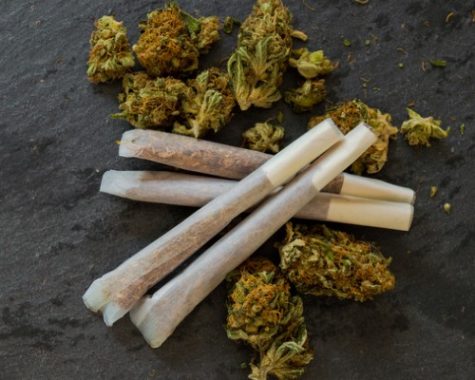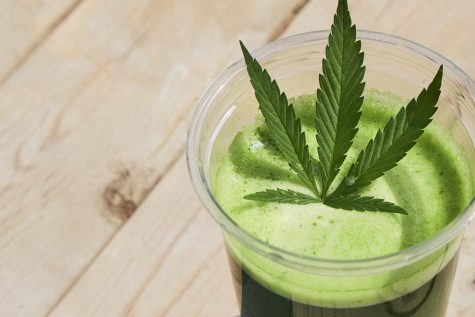NYU study: An increasing number of adults aged 65+ are using weed
The older population are lapping up the benefits of cannabis legalization, with fresh research indicating a rise in consumption among the 65+ age group. A team of researchers from New York University’s Grossman School of Medicine carried out the study to assess cannabis consumption rates among different age groups. Their findings were published in the JAMA Internal Medicine.
Using data that they pulled from the National Survey on Drug Use and Health, the NYU researchers discovered that the amount of U.S. cannabis consumers aged 65 and older climbed from 2.4 percent to 4.2 percent between the years 2015 and 2018. According to the researchers, their findings represent “a significant increase of 75 percent.”
A wide number of states enacted legalization during the time period focused on by the NYU researchers, which could explain why the number of cannabis consumers aged 65+ inflated so much. In addition to the increase in cannabis consumers aged 65 and above, certain subgroups also experienced significant growth in consumption rates; the researchers noted how females, people with higher-earning families, minorities and mental health sufferers were more likely to enjoy the green stuff.
Numerous states – such as Arizona, Missouri and South Dakota – could be on the verge of legalizing cannabis in 2020, whether it is for recreational or medical purposes. Currently, as of April, 33 U.S. states have established a legal medical cannabis market and 11 are actively involved in the recreational segment. Should more states legalize this year, the number of cannabis consumers aged 65+ is sure to climb higher.
Researchers didn’t provide specifics on cannabis consumption among the 65+ age group
Although the researchers from NYU Grossman School of Medicine were able to pinpoint which groups were more likely to consume weed, they weren’t able to specify which locations saw higher consumption rates among older age groups.
Moreover, the team failed to confirm whether the older age groups preferred using cannabis for medical purposes – i.e. in the form of a tincture or swallowable capsules for pain relief – or for social use, such as smoking joints and eating infused edibles.
“We believe use will continue to increase as ‘social acceptability’ of weed use increases among older populations. I think the majority of use among older people is for medical reasons, although we need more research to confirm this. I think more older people who use weed are using it for things like sleep,” suggested the study’s senior author and associate professor of population health at NYU Grossman School of Medicine, Joseph Palamar.
The study’s researchers also made a point of noting that the older adult age group are more vulnerable to experience unwanted side effects from cannabis. In addition to this, they noted how this age group – as well as other age groups that are consuming more cannabis nowadays – must educate themselves as much as possible on the pros and cons of using the plant. The importance of this cannot be stressed enough, say the researchers, considering the fact that federal legalization may soon be on the horizon.
Since cannabis legalization appears to be spreading like wildfire across the U.S. – not to mention the rest of the world – NYU’s study on cannabis consumption rates makes one wonder if the spike in older consumers is a direct effect of sweeping legalization. On the other hand, could it be an after-effect of raised awareness on the plant’s therapeutic potential? It could be a mixture of both, considering the fact that cannabis’ tainted reputation is gradually being mended.
“We believe the majority of older people who use weed aren’t recent initiates; at least this is what our previous studies suggest. I think the increases are mainly driven by boomers who use weed aging into the 65 and older age bracket,” explained Palamar, who says that his team are likely to continue pursuing their research efforts into the growing cannabis industry. “I’m sure the lead author will want us to look at some more weed data, but I honestly find the topic of [cannabis] a little boring. We’re in 2020 and I honestly don’t think increases in [cannabis] use should be considered such a big deal.”
Cannabis consumption study didn’t hone in on the subject of vaping
Upon reviewing the study published in JAMA Internal Medicine, it becomes apparent that vaping was not discussed; Palamar felt it wasn’t necessary. Instead, his team of researchers honed in on the consumption rates for “hashish,” “marijuana,” “pot”, “grass,” or “hash oil.”
“I don’t think the lack of a vaping question severely affects estimates of use, as other research suggests that most people who vape also use via other methods,” said Palamar, who may not have considered the fact that 2,807 people had been hospitalized due to tainted vape cartridges as of February 18, 2020; according to data published by the Centers for Disease Control and Prevention (CDC). With that being said, had vaping been mentioned in the study, consumption rates might have been lower.
Nonetheless, he is correct in saying that consumers tend to favor the industry as a whole, what with an increasing number of Americans supporting full legalization. This was confirmed by the Pew Research Center, which revealed in a recent poll that two-thirds of the American population want a federally-approved cannabis legalization law to be enacted nationwide. The least supportive age category proved to be adults who were born from 1928-1945; better known as the “Silent Generation.”








